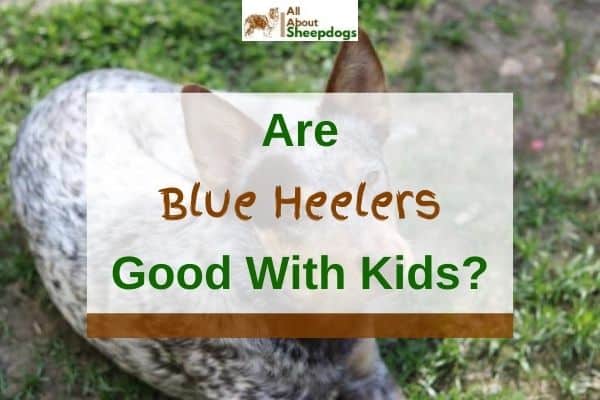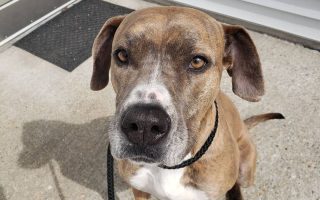These brawny Blue Heelers come with not just good looks but everything you need to amp up your life with a dog.
They are multitalented and are gifted with unmatched herding and guarding abilities to ensure a secure journey with them.
However, are Blue Heelers good with kids?
Here’s a complete guide to talking about your paw best friends and whether you can trust them around your kids or not.
So let’s get started!
[wpsm_toplist]
Are Blue Heelers Good With Kids?
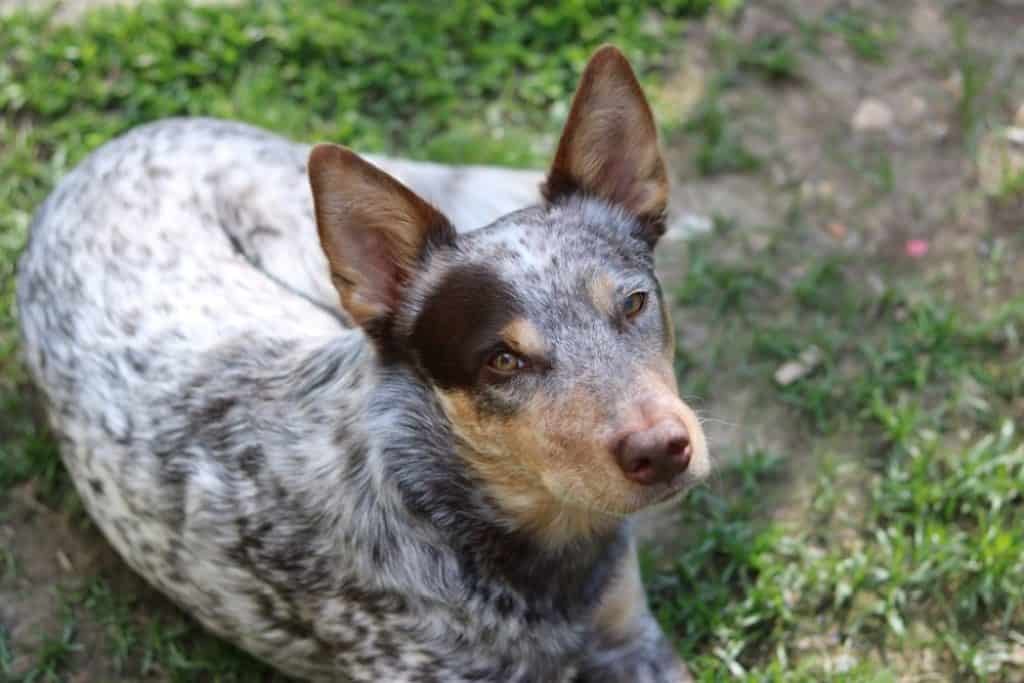
Blue Heelers are great with kids as long as children keep their movement in moderation.
This means children over 10 years old are better equipped to stay with Blue Heelers and ensure they don’t get hurt.
However, children younger than this are unpredictable, and your dog’s herding behavior can also kick in with some nipping.
The problem with toddlers is that you never know when they start climbing over a Blue Heeler and how it responds towards the baby.
Therefore, to avoid the relentless attention of your kid, always monitor them when they are close together.
Luckily, as older children are more aware of their body language, it is easier for the dog to get along just like the rest of the family.
Another thing to bear in mind is that considering how Australian Cattle Dogs are good guards and herding dogs, they have high needs to protect their family from others, even if that means younger children.
They may see slight kids’ arguments as a threat and start attacking unfamiliar kids in the area.
So stay close when your Blue Heeler has unfamiliar kids around him.
Here, training them when they were pups plays a huge role in helping them socialize and get used to kids in general.
Is a Blue Heeler a Good Family Dog?
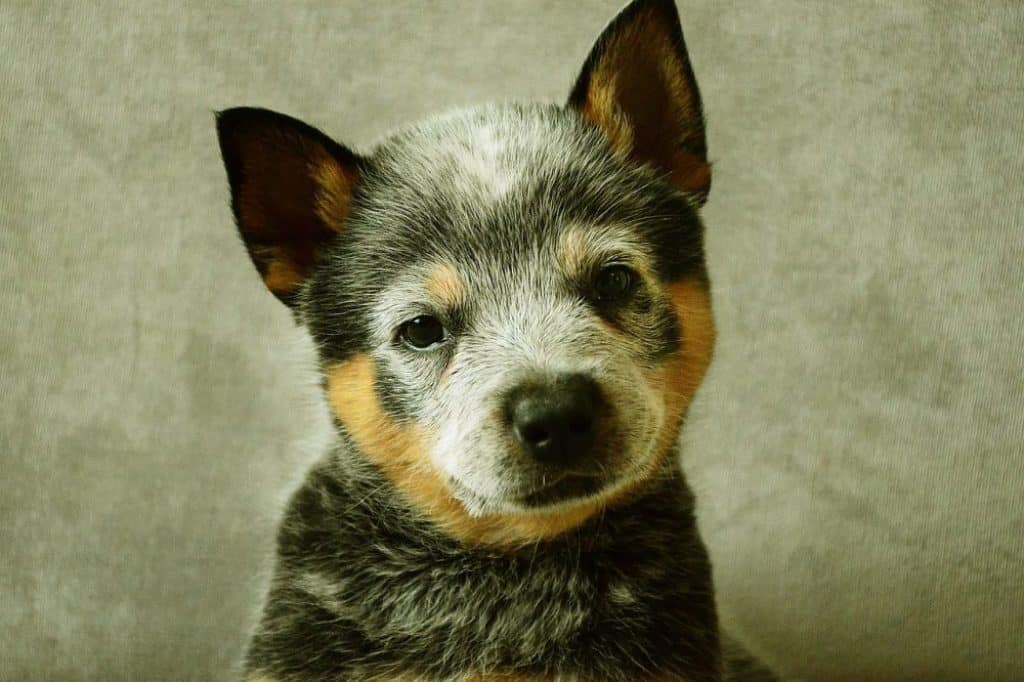
Blue Heelers have earned the reputation of being one of the smartest dog breeds to learn anything you teach them.
Although they are bred to dominate, guard and herd, there are a few qualities of them that can make them excellent family dogs.
Blue Heelers are resilient, curious, alert, and always on the run to learn new things from training.
The key to making these dogs a great family companion is to show them that you are the boss once you have given them enough training to realize who can give commands and what they will get if they fail to obey you.
Regardless of that, the only thing to be concerned about is their nipping behavior.
As the name suggests, they go after the heels of livestock or even humans who don’t follow the rules.
Although they won’t bite to the extent that it starts bleeding, they are still quite mouthy to keep livestock moving.
However, there are other things that you need to do to ensure they stay on their best behavior at home.
Exercise
As a general rule of thumb, Blue heelers are packed with energy.
This means they need something to use this energy on before it can work against them.
So to make sure they get the ever needed mental stimulation you need to stay consistent with their exercise needs.
This means for example taking them to long walks, to the park, and being generally active with them.
With this, you will also get to see how they use their energy the right way and show nothing but true loyalty to their owners.
The biggest culprit behind most of their attacks is their lack of social behavior.
Have you ever noticed dogs acting up in front of your neighbors or hiding inside during a party at home?
If yes, lack of socializing could be the problem.
If they have already started showing signs of antisocial behavior, it may be slightly more difficult for you to change their behavior.
However, if they are still pups; socializing is a no-brainer.
To do this, every time you take them out for a walk at the beach or park, make sure they socialize with other people and dogs.
If you have kids at home, make sure they also socialize with other kids.
Then, after taking host multiple parties at home, your puppy can get to know different people and learn to differentiate between normal human behavior and threat.
Remember, the sooner you start this training, the better.
However, if you have already reached that stage where your dog is a complete anti-social dog, you may have to carry out the same techniques but make sure to monitor them while they are among many unfamiliar people.
It will take slightly longer than usual, but it’s totally going to be worth it.
Training
Training is essential for all dogs, especially Blue Heelers, who can be aggressive if they aren’t properly trained.
Regardless of their breed and temperature, carry out rigorous training to help them get along with other kids (spoiler alert: I’ll be talking about that in a minute) and thrive positively.
Are Dogs Good for Kids?
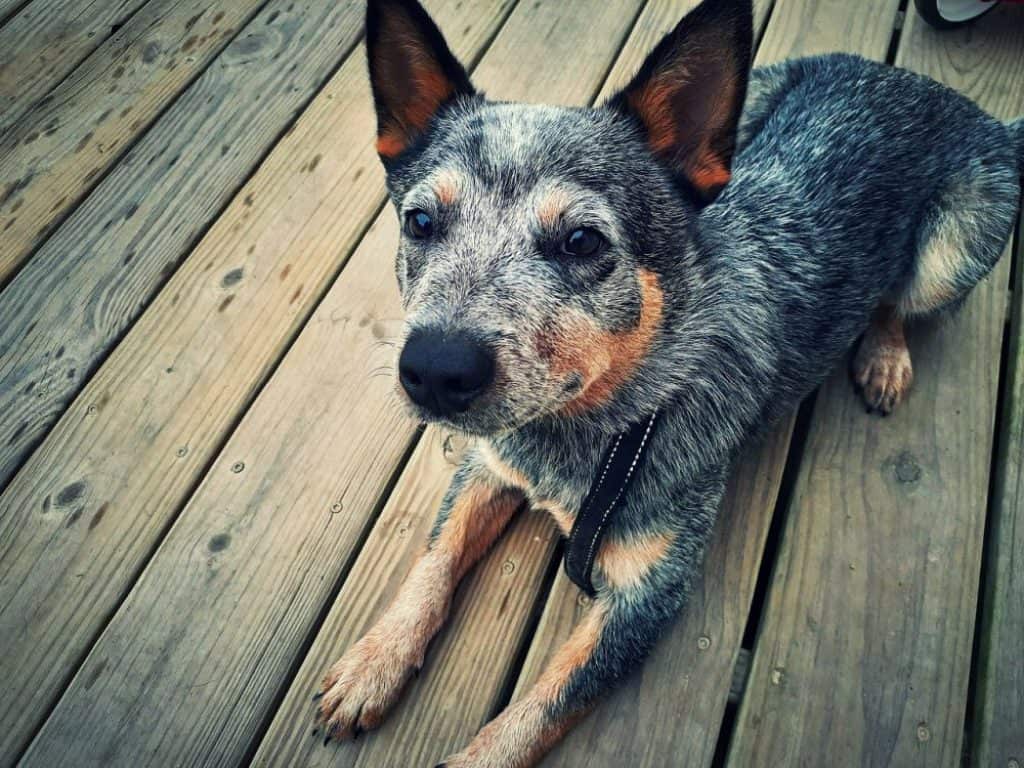
Before we dive more in-depth into Blue Heelers, let’s get the fundamentals straight and find out if dogs, in general, are good with kids.
Here are some of the facts that prove that dogs are good with kids.
Builds Emotional Empathy
Getting to know the emotional needs at a young age can help children empathize with their peers and prevent bullying and dominant behavior.
This relationship can grow to be stronger. Children learn more about others instead of centering the world around them.
Better Self Esteem
It is also proven that dogs can help children recover from trauma and gain higher self-esteem in the long run.
As children learn the responsibility to take care of dogs, they inevitably boost their confidence and divert their attention into doing more valuable things each day.
Fewer Allergies
Children who grow up with dogs run fewer chances of developing allergies over time and thus have shorter sick days.
This can be the biggest perk if your child is sensitive to other infections and externalities.
Develop Responsibility
Where younger kids are more into games, social media, and lazing around like a couch potato nowadays, having a dog can teach them the ever needed skills they need to feed, water, and take care of a dog to give them a sense of responsibility.
This means they are likely to grow up more mature than they would have if you didn’t have a dog.
Patience
Let’s admit it, regardless of how adorable your paw buddy may be; they can be frustrating; they chew, destroy furniture, potty in the living room (sometimes), and scratch frequently.
This requires tremendous patience to ignore and handle it so that you don’t abuse the dog by hitting or yelling.
Here, kids can use strategic and peaceful ways to make your dog understand with no violence whatsoever.
Not only do dogs learn to socialize themselves, but they can also teach your kids to enjoy showing love and attention to others.
This way, your kids will better get along with other people and understand the people with disabilities.
Helps Them During Trouble
Dogs have an excellent sense of detecting abnormalities. This is especially true when your child has diabetes or other physical disabilities.
You can count on your dogs to inform you when your child has a low sugar level, seizure, or fallen hard on the ground.
They will be by their side to guard them when you aren’t around.
As for the safety of your children, you need to carry out proper training to familiarize your dog with your child and keep an eye on their behavior for the first few months.
What Should Kids Not Do to Dogs?
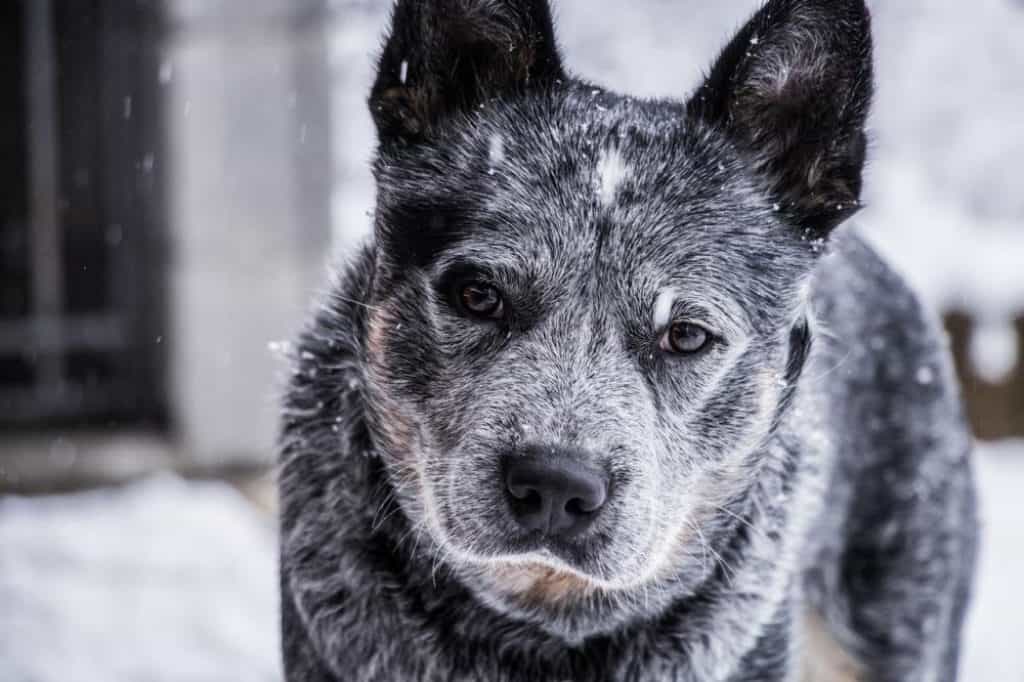
Inevitably, your kids will naturally gravitate towards dogs.
They love to cuddle their big furry buddies and play with them. However, it is truly up to your dog how to react to your kids’ activities.
The breed and temperament don’t really play a big role here, as long as your kid has their impulsive moment in check.
Although it won’t take much longer for your kid to get used to their pet, the real problem comes in when they treat all dogs like their pets.
Therefore, it is important to teach your kids that not all dogs are alike and when it is okay to touch and cuddle with them.
Annoying dogs while eating or triggering them when they are growling or in a bad mood is surely the worst thing your kids can do.
Instead, show them the privacy of your dog and ask them not to disturb them when they are sleeping or when they want to spend some time alone.
These important lessons will keep your kids safe around any dog you may have and ensure that your kids don’t run around bugging your dog at home.
How To Train Your Dog To Safely Play With Kids
Many people have dogs in their house first, then a baby; this means your kid can get a chance to grow up with their dog friend and learn to interact at an early age.
Unfortunately, it can be difficult to avoid interaction between your kid and the dog at these times.
Thus, equipping your Blue Heeler with the right training can go a long way in helping your kid to have a safe journey with their pets.
It is not a good idea to begin the interaction when your child is only 2 years old.
When we take Blue Heelers’ strength and high energy, they may end up unintentionally harming your delicate child.
Letting your dog see the baby and getting to know her will be a better option to help them familiarize themselves as your child gets older.
Remember, Blue heelers prefer a more structured environment where their lives are packed with regular training like obedience and socializing.
This means they don’t just prefer good training in other activities but interaction with other humans of different age groups, ethnicities, and genders.
Here, just like with anything else, consistency also plays a big role in letting your dog know that they can’t get away with certain things and whom they should obey.
You can reward your dog every time he manages to spend more than half a day with your kid without showing any sign of distress and behaving properly.
Along with that, you can also ask your kid to stay conscious in front of dogs and avoid any unwanted behavior that can trigger Blue Heelers.
The good thing is Blue Heelers are people pleasers.
They can do anything that can make you happy and become a part of your family so getting them to be friendly with kids is surely not a difficult ride for you.
In fact, this is one of the main reasons why Blue Heelers make up one of the best family dogs to have at home with you and around your children.
Conclusion
Coming to the end of the guide, you are fully equipped to train your dog to get along with kids if you have reached here.
However, bear in mind that regardless of your dog’s breed and behavior, you should never leave your child with him for too long.
They may not pose a grave danger to your kid, but they can unintentionally nip or harm them in your absence.
And you can’t really stop it because dogs are dogs and children are children.
Once you are confident enough to leave your kids alone, monitor your kid’s movement so that they don’t go overboard with the touching and end up triggering them.
Good luck!

